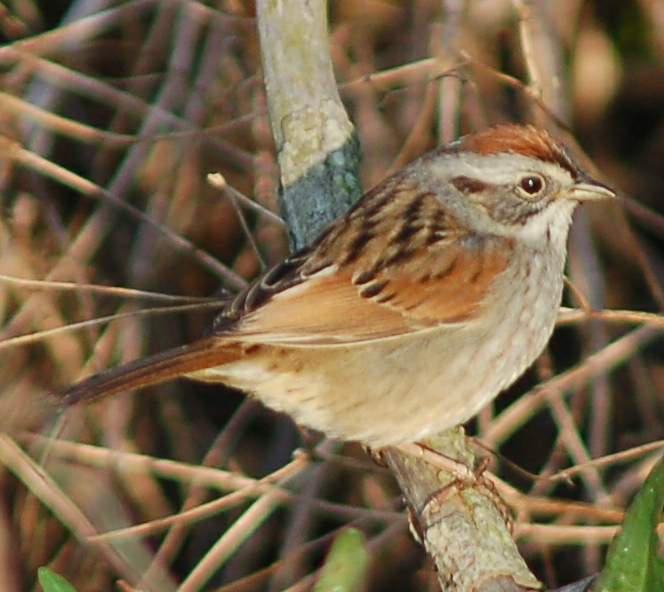Salutations in your general direction! This communiqué is being crafted from Emporia, KS, about 100 miles southwest of Kansas City, and home of the great Emporia State University and their Lady Hornets, winners of the 2010 Division II Women's Basketball Championship, or so signs around town proclaim.
Why are we in Emporia? I'll get to that in a minute.
The theme of this week has been, "Get up freaking early". Wednesday, we got up early for a chase of the Copper Bird:
 |
| This is actually a Lewis's Woodpecker, but I think old Meriwether was a little full of himself. |
We easily found them over in Vacaville thanks to reports submitted to eBird. In fact, we literally drove up to the tree in which they were sitting (the Brambling should take a few tips on proper bird etiquette from them).
Thursday, we rose at 4AM for our flight to Kansas City. We're in Kansas for the next few days to find birds that winter down here, but spend their summers in remote parts of the far north (like, Artic Tundra/Polar Bear/Midnight Sun north). While Kansas in the winter might feel like the Arctic to those of us from California, it's presumably a little easier to get to than Nome, AK.
Thanks again to eBird, after leaving the airport, we headed straight to a remote field where they had been reported recently. After only a few minutes of looking...success! Lapland Longspurs!
 |
| Looking slightly confused, probably about why she's in a remote, barren field in Kansas |
 |
| Girl on the left, boy on the right |
TTYL,
Me

























